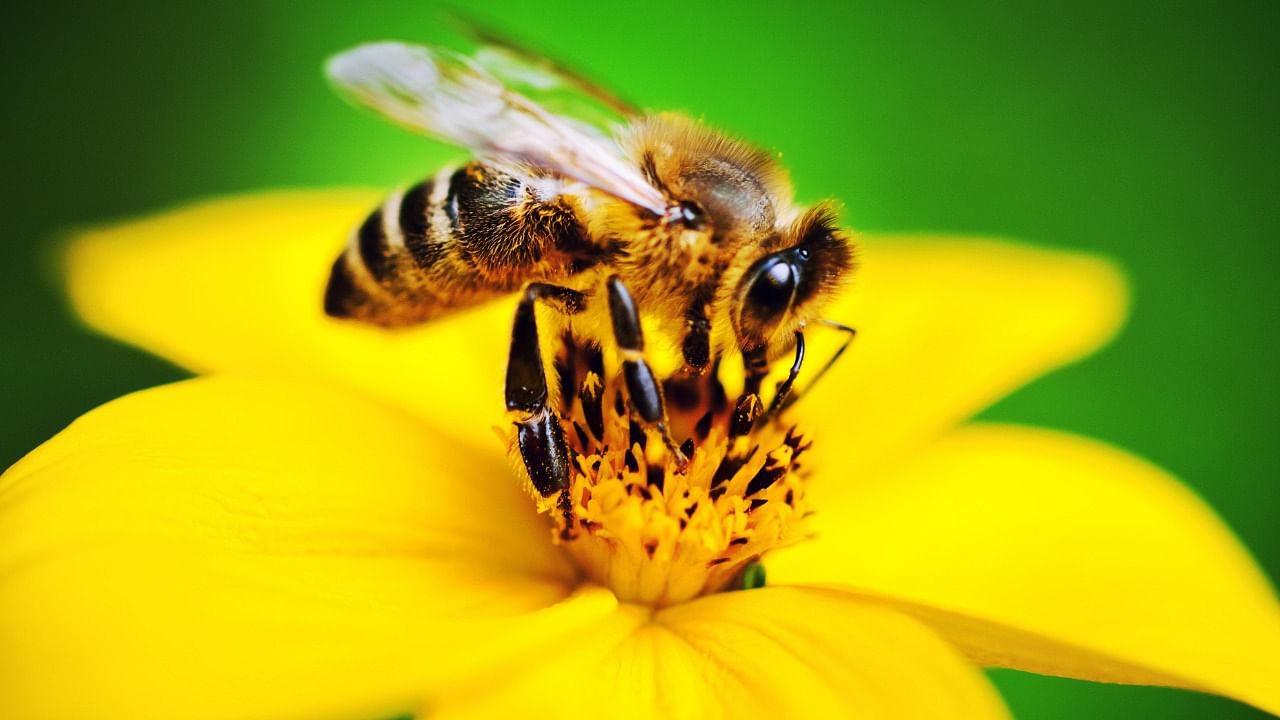
Karnataka may well be on the cusp of a sweet revolution, as honey production has skyrocketed in the past four years. Most new apiarists are young entrepreneurs and farmers looking to supplement their income.
Beekeeping equipment suppliers report that their sales have grown threefold in the past year alone. “I used to sell 4,000 to 5,000 beekeeping boxes a year. Last year, I sold around 15,000,” says Apoorva B V, who produces honey and manufactures equipment.
Apoorva reports a manifold increase in people seeking to learn the trade. “Since Covid, the number of people we train has doubled. About 2,000 people attend our workshops every year now. Earlier, we would have to advertise, but now people reach out to us,” he says.
Rising consumer consciousness in recent years is driving up demand for unadulterated, locally-sourced honey.
Consumers want to trace the origin of the honey. “We can prevent adulteration by supporting local entrepreneurs,” says Vishweshwar Bhat, chief executive officer of Kadamba, a farmer initiative in Uttara Kannada that markets honey.
As a result, local cooperatives have seen an exponential rise in sales. “Earlier, we used to market 200 kg of honey a year, in the past two years it has grown to around 3,000 kg per year,” he explains.
This rising demand has drawn entrepreneurs to the profession. Bhat adds that Kadamba sources honey from close to 120 farmers currently, twice the number they worked with before.
The industrious bees have helped alleviate the condition of farmers burdened by crop loss and heavy monsoons.
Most farmers report making a profit of over Rs 1 lakh every year, solely from beekeeping. “After the landslide in Kodagu in 2018, my crops suffered. I bought a few beekeeping boxes and initially made enough honey for my household. Now, I sell around 120 bottles a year, each for Rs 1,000. My annual expenditure is around Rs 6,000 to 7,000,” says C B Thammiah, a farmer from Somwarpet taluk.
“Earlier, beekeeping was common among coastal farmers. However, now farmers from other regions are adopting the practice as well,” said K S Jagadish, professor and Head, Department of Apiculture, University of Agricultural Sciences GKVK, in Bengaluru.
One such beekeeper is Radala Aravinda from Ballari district. “I got into beekeeping after incurring heavy losses in horticulture. After some time, I also began to manufacture and sell byproducts like beeswax. Today, I have over 50 colonies and supply honey, boxes and colonies to buyers across the state and in Andhra Pradesh,” says Aravinda.
People without their own land are setting up hives in others’ farms, fields and even untended land. Government subsidies have played a role in motivating them to venture into beekeeping.
Bees also carry immense potential as pollinators. “We can even sell the hive for Rs 2,000 each to estates, where they are used for pollination,” says Thammiah.
“We are seeing lots of people in urban areas eager to get trained. Farmers are also investing in professions like beekeeping and sericulture. As a result, in the past four to five years, it has become a challenge to meet the demand for training,” Jagadish says.